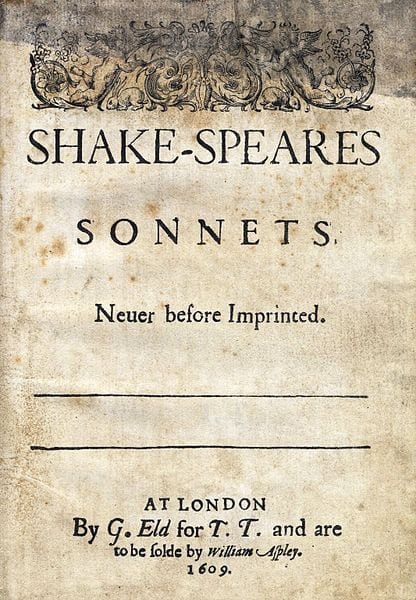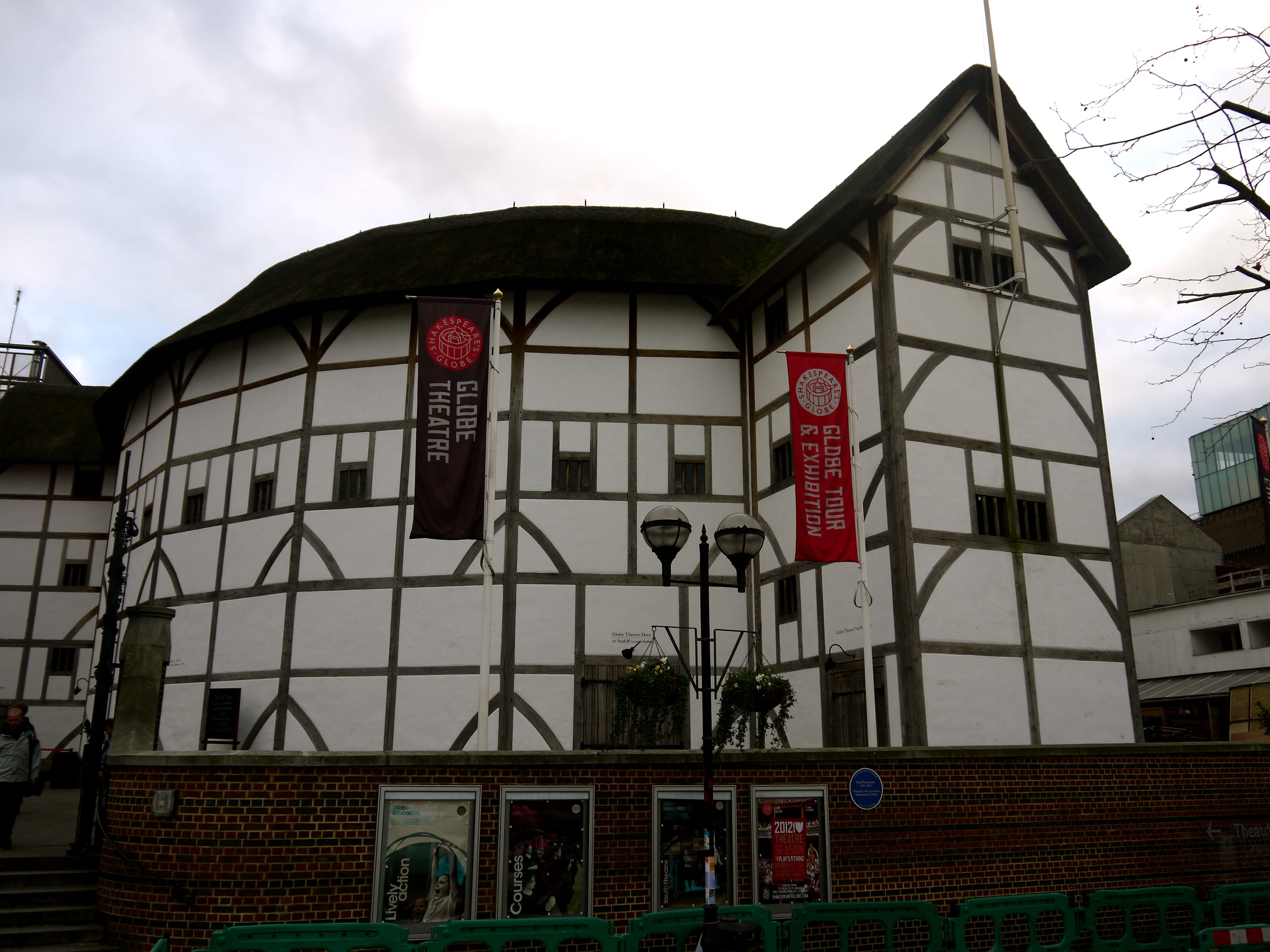BACKGROUND:
 |
| Title Page of Shakespeare’s Sonnets (1609) |
Shakespeare’s sonnet sequence is comprised of 154 sonnets that were published in 1609. The vast majority of these sonnets are addressed to an unnamed attractive young man who represents beauty, love, and praise. In these sonnets, Shakespeare is reiterating to the young man that it is his duty to marry and have kids, urging him to reproduce so that his physical beauty will be eternalized through future generations. In addition, some of the later sonnets in the series are written about a Dark Lady and focus on degrading sexual desires. Shakespeare’s sonnets helped to increase his prominence as a poet with a unique style.
STRUCTURE AND LANGUAGE IN SHAKESPEARE’S SONNETS:
Shakespeare’s sonnets are composed of 14 lines, each written in iambic pentameter and most with the traditional rhyme scheme of the English sonnet: abab cdcd efef gg. In addition, Shakespeare’s sonnets typically have three distinct quatrains, each of which often is constructed with a separate metaphor and a closing couplet that ties everything together.
As for the larger structure of the sonnet sequence, it is important to note that, as Shakespeare provided no explanation for the intentions behind his sonnets, the order in which he intended them to appear is unknown. Therefore, the order in which they were published might not have been the order in which Shakespeare had written them.
Shakespeare uses many nature-oriented metaphors in his sonnets. It is noteworthy to point out that Shakespeare is never afraid to portray nature in a distasteful manner.
THEMES IN SHAKESPEARE’S SONNETS:
 |
| An inside view of the Globe Theater (2012) |
Various themes exist in Shakespeare’s sonnet sequence. First of all, love is seen as a common theme, as it was in many of the Elizabethan sonnets. In addition, Shakespeare’s sonnets focus on the power of time, and how time can wither away beauty. In many of his poems that are written to the young man, Shakespeare (the narrator) is demonstrating the theme of the importance of reproduction. He asserts the value of eternalizing beauty through reproduction and by passing it down through generations. His sonnets focus on physical beauty rather than intellectual beauty. Regarding the theme of time, Shakespeare asserts that only love and poetry (or another type of writing) are the only phenomena that can counter time.
While Spenser shows in Amoretti that he values true beauty, which he portrays as a person’s God-given traits of moral virtue and intelligence, Shakespeare champions physical beauty that is portrayed through a person’s looks. It is important to note here that, while the subject of Spenser’s sonnets was his desired female lover, Shakespeare was addressing his poems to a young man.
SELECTED SONNET FOR ANALYSIS:
SONNET 1:
From fairest creatures we desire increase,
That thereby beauty’s rose might never die,
But as the riper should by time decease,
His tender heir might bear his memory;
But thou, contracted to thine own bright eyes,
Feed’st thy light’s flame with self-substantial fuel,
Making a famine where abundance lies,
Thyself thy foe, to thy sweet self too cruel.
Thou that art now the world’s fresh ornament
And only herald to the gaudy spring,
Within thine own bud buriest thy content
And, tender churl, mak’st waste of niggarding.
Pity the world, or else this glutton be,
To eat the world’s due, by the grave and thee.
ANALYSIS OF SONNET 1:
In line 1, when Shakespeare writes, “fairest creatures we desire increase,” he is saying that we want more attractive, beautiful people in the world. The “rose” in line 2 is an example of another flower metaphor. In this second line, when Shakespeare writes, “beauty’s rose might never die,” he is again speaking about the preservation of attractive people through generations. In line 3, Shakespeare brings up the theme of the power of time, saying that everything that is beautiful will eventually lose its beauty and die. When he writes, “tender heir might bear his memory,” he is still talking about the importance of reproduction.
 |
| The Globe Theater in London (2012) |
In line 6, Shakespeare uses the phrase “self-substantial fuel” to indicate that he is too self-consumed to think about starting his own family. He is saying that the young man needs not to think about himself so much. In line 7, Shakespeare is saying that if a person who is as attractive as this young man does not reproduce, he is wasting his gifts and opportunities. The phrase “thyself thy foe” means that he is too introverted and hard on himself.
In the third stanza, the phrase “world’s fresh ornament” is used to refer to something of beauty, something precious to be regarded as special. The phrase “tender churl” is an oxymoron, which was commonly used among the Elizabethan sonneteers, and the word “tender” can be interpreted as referring to his physical features. The “churl” refers to the young man himself. “Niggarding” in line 12 means “hoarding,” as in hogging beauty all to himself. Finally, in the final couplet, Shakespeare is telling the young man that if he doesn’t reproduce, his beauty will eventually die out, and that he will be a “glutton” by wasting it.
Back to Elizabethan Sonnet Sequence
“An inside view of the Globe Theater (2012)”, picture by Elizabeth Sobel
Greenblatt, Stephen, George Logan, Katherine E. Maus, and Barbara K. Lewalski. The Norton Anthology of British Literature: Volume B. Ninth ed. New York: W.W. Norton & Company, Inc., 2012. Print.
“The Globe Theater in London (2012)”, picture by Elizabeth Sobel
“Title Page of Shakespeare’s Sonnets (1609)”, https://sites.udel.edu/britlitwiki/files//2018/06/FileSonnets1609titlepage.jpg
